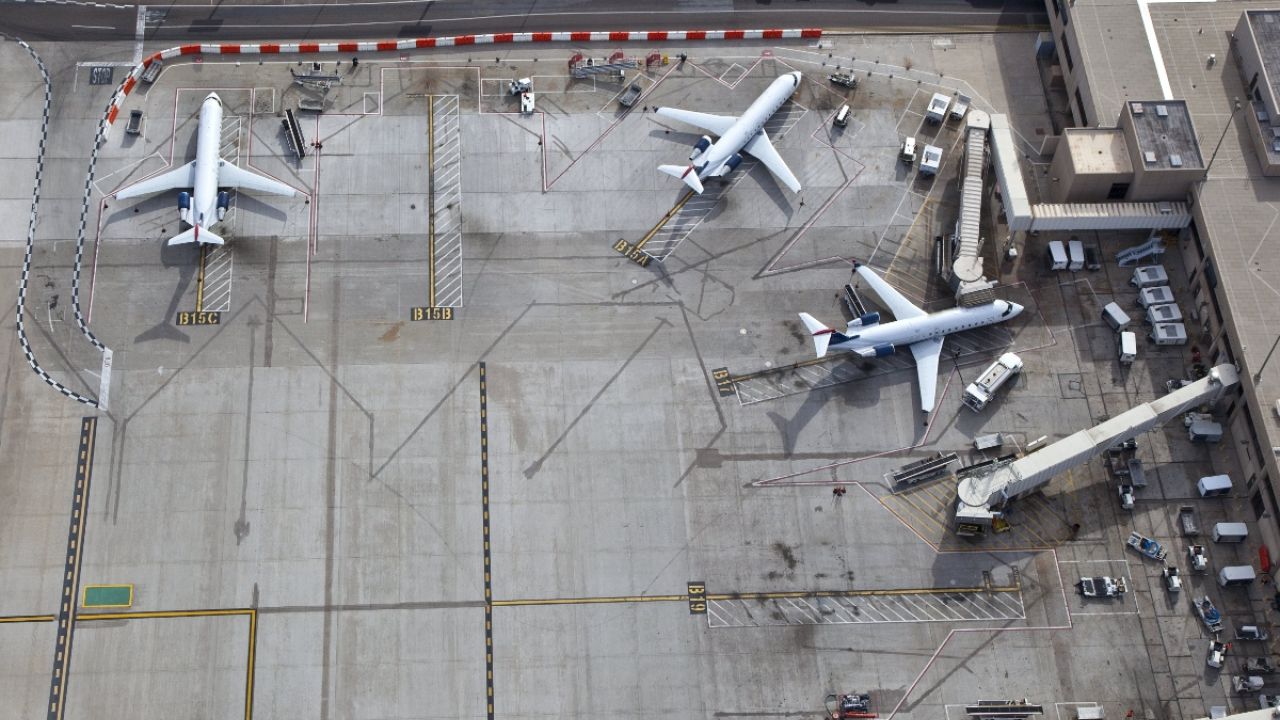
The Federal Aviation Administration has a duty to let airports use firefighting foams that don’t contain the toxic “forever chemicals” known as PFAS, but instead it wants to blow past a looming October 4 deadline for letting them make the switch – despite having had three years to act.
Even though Congress set the deadline in 2018 as part of that year’s FAA Reauthorization Act, the agency is now signaling it needs more time. This means airports will continue to be forced to use a special kind of PFAS-contaminated firefighting foam known as aqueous film-forming foam, or AFFF, typically used on high-heat fuel fires.
Switching to PFAS-free firefighting foams at airports would help protect firefighters, who have higher levels of PFAS in their blood than the average American, according to studies. PFAS-based firefighting foams have been widely used by the military, fire training centers and airports for five decades.
PFAS are known as forever chemicals because once released into the environment, they never break down. They also build up in our bodies, where they can stay for decades. PFAS can increase the risk of cancer and can cause reproductive and developmental harms, and harm to the immune system.
But dropping airports’ requirement to use AFFF requires the FAA to pursue a formal rulemaking.
In an August 24 letter to the FAA Research, Engineering, and Development Advisory Committee, FAA Administrator Steve Dickson said his agency will “likely need additional time” for the change required by Congress. He said the FAA would support an extension of the October 4 deadline.
That cutoff is just days away, but the agency has not yet released any documents about the rulemaking for public comment. Now, instead of writing new rules allowing airports to use non-PFAS foams, the FAA is conducting duplicative and unnecessary tests of these foams.
Viable foam alternatives have been on the market for almost 20 years. Nearly 100 fluorine-free foams have been identified by the New York State Pollution Prevention Institute, and now there is an eco-label to certify PFAS-free foams. PFAS-free foams are already being used successfully by airports, militaries, and oil and chemical companies around the world.
Many of these foams meet the International Civil Aviation Organization, or ICAO, Level B standards used by airports across the globe. All 27 major Australian airports have transitioned to fluorine-free foams, as have many major international airports, including London Heathrow and Gatwick, Paris-Charles De Gaulle and Dubai.
The FAA should move quickly to authorize airports to use the PFAS-free foams that already meet the ICAO standards.
Instead, it has focused inappropriately on testing firefighting foams to see whether they meet U.S. military specifications. That focus is misguided because airport fires are not the same as fires that occur on military bases, aircraft carriers, ships and submarines. The ICAO standards are designed for airport fires, and foams that meet those rigorous standards have been proven to be effective and are readily available.
Safe PFAS-free foams already exist for airports to use
Although PFAS-based and PFAS-free foams do not perform identically, firefighters can adjust their tactics to enhance the effectiveness of PFAS-free foams.
Randy Krause, fire chief at Seattle-Tacoma International Airport, told the Washington state senate last year that tests often do not account for firefighting tactics that enhance the performance of fluorine-free foams, making them appear less effective than they are in practice.
PFAS-free foams already have a track record of effectiveness.
In 2013, fluorine-free foam put out an aircraft fire at Heathrow in less than three minutes, and all passengers were evacuated safely. In 2018, the industry group LASTFIRE conducted tests on PFAS-free foams at the Dallas-Fort Worth Fire Research and Training Center and found that PFAS-free foams performed “exceptionally well.”
PFAS-free foams are used by oil and chemical manufacturers, including BP, ExxonMobil, Statoil, BASF, AkzoNobel, Pfizer and Lilly.
FAA’s delay affects firefighters and communities living near airports, prolonging the risk of their exposures to PFAS. Action by the FAA to let airports switch from AFFF to non-PFAS alternatives would significantly reduce contamination near and downstream from airports. Firefighting foam is one of the most potent sources of water contamination from PFAS.
Efforts to ban PFAS-based firefighting foam increase
PFAS-based AFFF is already banned in several places. In 2018, the Australian state of South Australia became the first government body in the world to ban fluorinated firefighting foams. Queensland, another Australian state, has banned PFAS foams, with some exceptions.
Also in 2018, Washington state banned PFAS in firefighting foam but exempted oil facilities, chemical plants and airports – but eliminated those exemptions in 2020. California, Colorado, Connecticut, Illinois, Maine, Minnesota, New Hampshire, New York and Vermont have also banned PFAS in firefighting foam. Several other states, including Iowa, Maryland and Texas, are considering similar prohibitions.
In 2019, 31 environmental groups, including EWG, urged then-FAA Acting Administrator Daniel Elwell to immediately approve the use of non-PFAS firefighting foams at airports.
“Outside of the United States,” they wrote, “major airports have adopted PFAS-free foams that meet the ICAO B standard. There is nothing to prevent FAA from immediately making this change to allow US airports to meet this standard.”
The FAA could have easily acted in 2019, but it failed to do so. It’s unacceptable that two years later, the agency is advocating for further delays, even facing the threat of a congressional deadline.
It’s time for the FAA to stop stalling and move quickly to protect drinking water, firefighter health and all of us from these dangerous chemicals.



